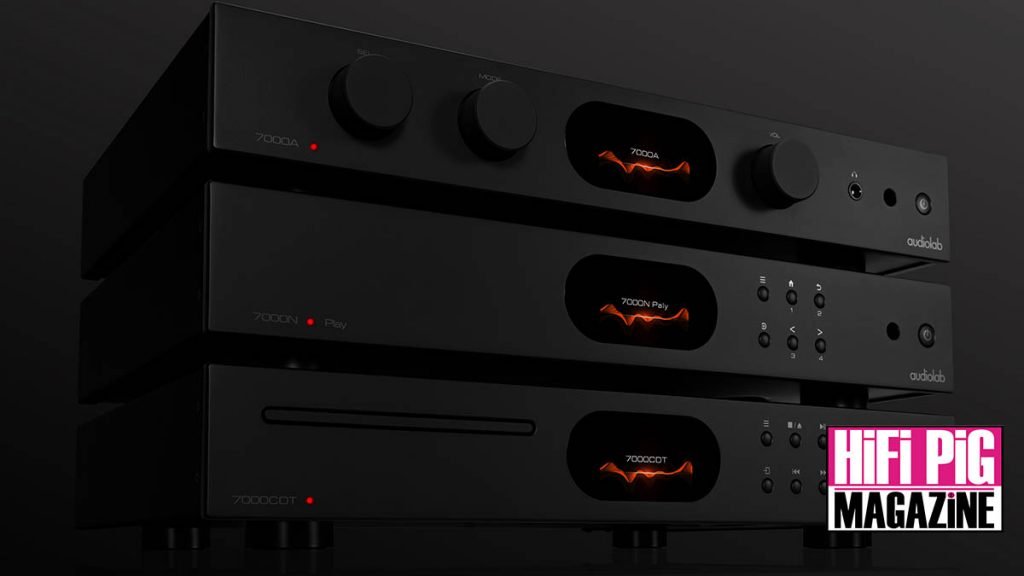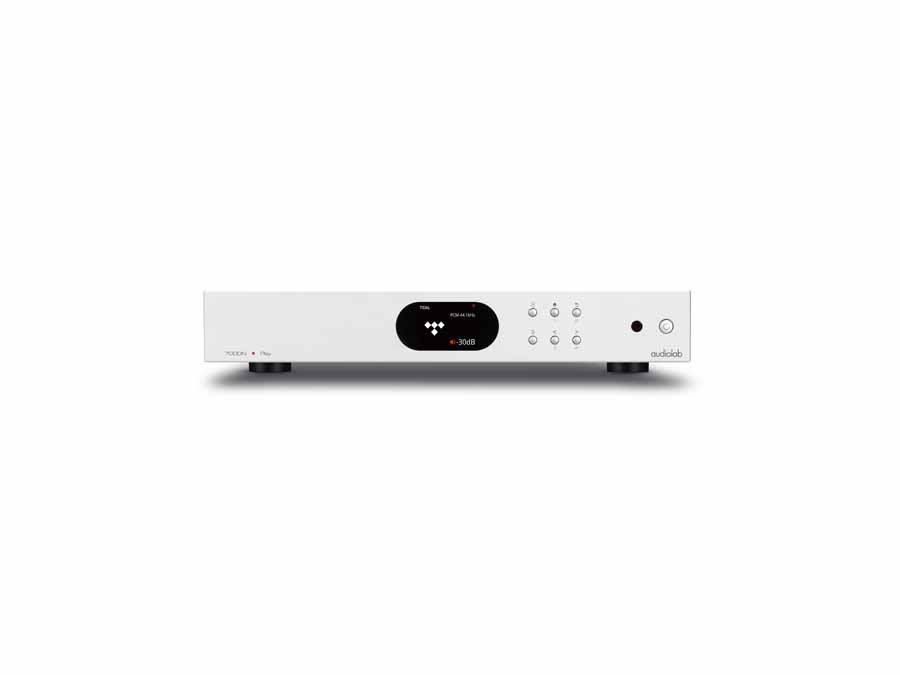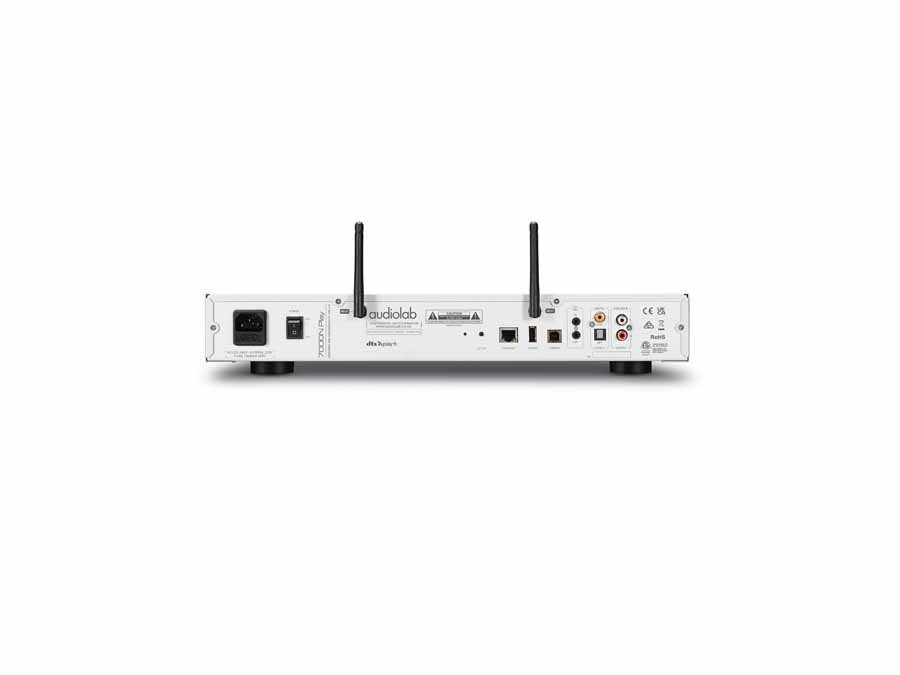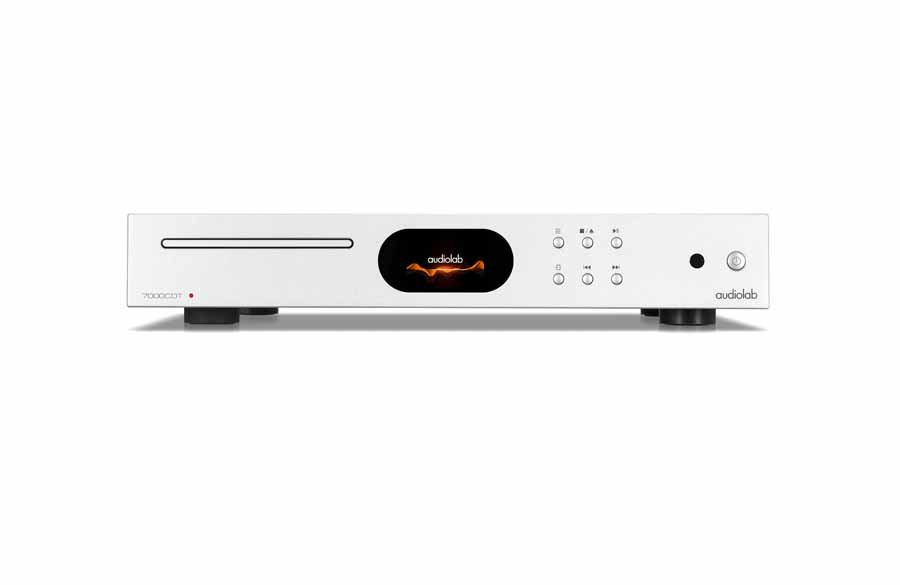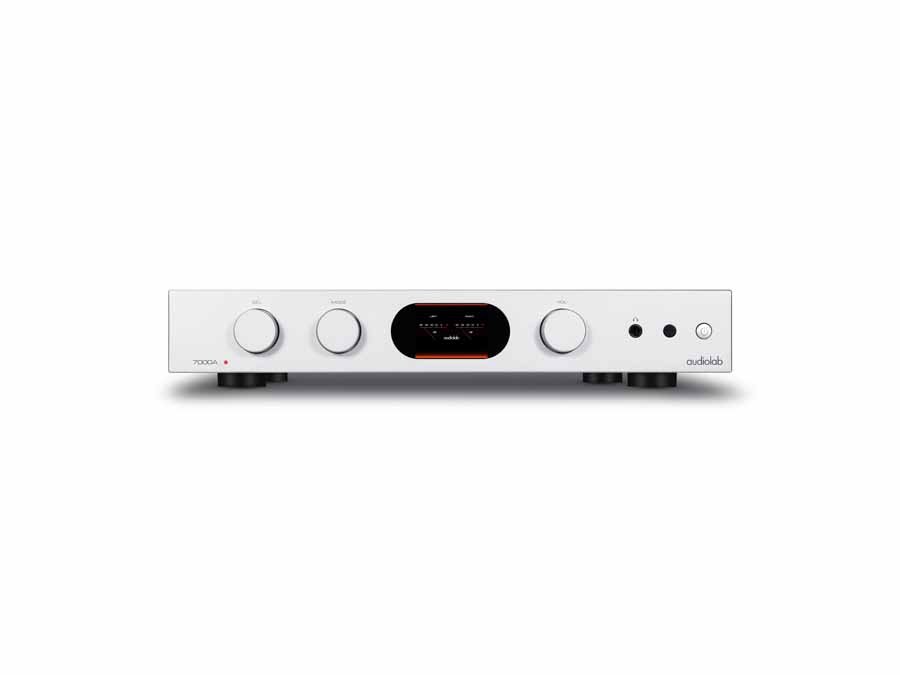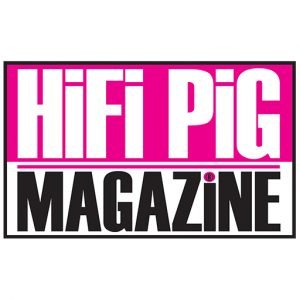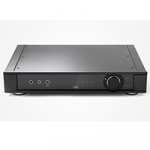 THE NEW AUDIOLAB 7000 SERIES COMPRISES OF A NETWORK AUDIO PLAYER, CD TRANSPORT AND AN INTEGRATED AMPLIFIER
THE NEW AUDIOLAB 7000 SERIES COMPRISES OF A NETWORK AUDIO PLAYER, CD TRANSPORT AND AN INTEGRATED AMPLIFIER
The new 7000 Series includes the Audiolab 7000N Play network audio player, Audiolab 7000CDT CD Transport, and Audiolab 7000A Integrated Stereo Amplifier.
AUDIOLAB 7000 SERIES
The 7000 Series is a logical step for Audiolab, filling the space between the entry-level 6000 Series and the flagship 9000 Series.
Audiolab’s 7000 Series music streamer builds on their 2019 6000N Play to deliver wireless streaming to any home audio system. Sporting a range of upgrades over the 6000CDT, Audiolab’s new 7000 Series CD transport is the perfect CD-playing companion to Audiolab’s 7000A integrated amplifier. The Audiolab 7000A Integrated Stereo Amplifier builds upon the same design fundamentals as the 6000A, recognising that while an amplifier is still the beating heart of any high-performance audio system, just as it has been for decades, a truly versatile integrated amp now needs to cover many bases including digital and analogue sources, wireless connectivity for portable devices, a phono stage for playing vinyl, and amplification for headphones as well as speakers.
AUDIOLAB 7000N PLAY NETWORK AUDIO PLAYER
The Audiolab 7000N Play network audio player combines the versatility of the DTS Play-Fi wireless audio platform incorporating the latest Play-Fi module, extra features and a DAC upgrade. Users can stream from any source connected to their home network, smartphones, tablets, PCs and Macs, as well as NAS drives and music servers utilising the 7000N Play’s dual-band, dual-antenna Wi-Fi. It also connects wirelessly with other Play-Fi-equipped devices, enabling a fully synchronised multi-room set-up.
STREAMING
There are three ways to stream once the 7000N Play is connected to a broadband router via Wi-Fi or Ethernet cable. The first is via the Play-Fi app, which gives access to a variety of online streaming services including Tidal, Spotify, Amazon Music, Qobuz and Deezer, plus thousands of internet radio stations and podcasts, as well as streaming content stored on local DLNA-compliant devices. The second is Spotify Connect, which enables streaming direct to the 7000N Play using the Spotify app rather than the Play-Fi app. And the third is AirPlay 2, which gives access to Apple Music and other streaming platforms when using an iPhone, iPad, Mac or Apple TV as the source/control device. AirPlay 2 is a new feature added to the 7000N Play, and an important one for Apple users.
UPGRADED INTERNALS, NEW DAC
The Audiolab 7000N Play incorporates a high-quality DAC (Digital-to-Analogue Converter), upgrading the ES9018K2M Sabre32 chip found in the 6000N Play to the new-generation ES9038Q2M, as used in Audiolab’s new 7000A integrated amp. This is accompanied by proprietary circuitry to make the most of ESS Technology’s HyperStream II architecture and Time Domain Jitter Eliminator for ultra-low noise and high dynamic range. Hi-res audio streaming is supported to 24-bit/192kHz over Wi-Fi and Ethernet cable.
The circuit design also draws inspiration from Audiolab’s new 7000CDT CD transport, incorporating the same isolated power supply with a high-efficiency, low-noise toroidal transformer to maintain optimum signal purity.
COLOUR DISPLAY AND FLEXIBLE FEATURES
Audiolab’s new streamer sports the same 2.8in IPS LCD display and attractive GUI as the other 7000 Series components. This shows a variety of information, including the currently connected streaming service, track details and format/sample rate, and provides access to functions such as balance control, auto-standby settings, fixed or variable output, and 12V trigger activation for system control. The menu also facilitates digital filter selection, the same five settings provided by the 7000A integrated amp.
VU METERS
The display can even be set to show a VU meter in ‘analogue’ or ‘digital’ form, presenting real-time signal levels for the left and right channels. As with the other 7000 Series components, animations can be turned off and brightness adjusted, and the display can be set to activate only when a function is accessed and switch off after a defined period, as the user prefers.
The GUI can be navigated using the included remote or the six buttons to the right of the display, four of which also double as ‘preset’ selectors. These presets operate like those on a DAB or FM radio tuner; simply select an internet radio station, or a playlist from a streaming service, and store it as a preset for speedy access at the press of a button.
AUDIOLAB 7000CDT CD TRANSPORT
CD remains an important part of the high-performance audio scene, with many music fans possessing still-treasured CD collections built up over many years. Sales of new CDs have been rising too. For some, the tangible, tactile sense of ownership that physical media provides still holds great value in the age of digital streaming.
Audiolab has never deserted CD users, as evidenced by the CD-playing components that reside within the entry-level 6000 Series and flagship 9000 Series. These are CD transports, as opposed to CD players, which means they do not contain an integral DAC instead, they are designed to be connected to an external DAC of the user’s choice. The integrated stereo amps in Audiolab’s range all include their own high-quality DAC circuits, which makes Audiolab’s CD transports their ideal CD-spinning partners.
AUDIOLAB 7000CDT UPGRADES
Two of the upgrades are obvious when the 7000CDT is examined from the front. First, the centrally positioned, stadium-shaped display is a little larger than that of the 6000CDT, replacing the latter’s monochrome text display with the same colour GUI found throughout the new 7000 Series. Second, the 6000A’s slot-loading mechanism has been replaced by a tray-loading mechanism, housed in its own electromagnetically shielded enclosure and incorporating a high-precision optical system and low-friction loading tray.
Under the hood, enhancements have been made to the power supply and output circuitry, including a higher quality toroidal transformer. Great care has been taken over the 7000CDT’s construction and circuit layout, to combat the sonically deleterious effect of vibrations generated externally and by the mechanism’s high-spin-velocity motor, and to protect the most sensitive elements from electrical noise.
MASTER CLOCK
The 7000CDT’s master clock is controlled by a temperature-compensated crystal oscillator, enabling the digital output from its coaxial and optical sockets to exhibit low levels of jitter. In addition, the coaxial output is fed from a differential line driver to ensure a flawless digital signal reaches the accompanying DAC. Naturally, the 7000A’s DAC section is a sonic match; the 7000CDT can also be partnered with any other high-quality DAC selected by its owner.
As well as spinning CDs, the 7000CDT features a USB Type A input, enabling playback from USB storage devices, this is a feature that the 7000CDT shares with the flagship 9000CDT but is not offered by the entry-level 6000CDT. FAT12, FAT16 and FAT32 formatted devices are supported, and WAV, WMA, AAC and MP3 files can be played, with file navigation via the front panel controls and remote handset.
AUDIOLAB 7000 SERIES CASEWORK
The 7000CDT’s sturdy aluminium casework and 2.8in display echo those of its range mates, the 7000A integrated amp and 7000N Play Wi-Fi/Ethernet streamer. The display shows track information from CDs and USB-connected storage devices, complete with colour graphics, and provides access to functions such auto-standby settings and 12V trigger activation for system control. As with the other 7000 Series components, animations can be turned off and brightness adjusted, and the display can be set to activate only when a function is accessed and switch off after a defined period, as the user prefers.
AUDIOLAB 7000A INTEGRATED STEREO AMPLIFIER
The 7000A’s circuitry, both digital and analogue, has been enhanced to deliver updated facilities and upgraded performance.
At first glance, the 7000A looks similar to its entry-level sibling but there are key aesthetic differences. Some are subtle, such as the sharper edges to the rotary controls and changes to the vent perforations on the top surface. The new amp is also a little heftier, at 8.4kg compared to 7.8kg. But the most obvious aesthetic change is to the central display, while this remains stadium-shaped, just like the 6000A, the window has been enlarged to incorporate a 64x48mm display.
The reason for this is clear as soon as the amp is powered up. The 6000A’s monochrome text display has been replaced by a colourful GUI, like the one found on the flagship 9000A (albeit the IPS LCD screen is smaller – 2.8in compared to 4.3in). This shows a variety of information in a visually appealing way – volume level, input selection, format data and more. It gives access to the 7000A’s menu system, which includes such options as digital filter selection, upsampling, input sensitivity adjustment, balance control, automatic standby switching, and volume curtailment when the amp is powered up. It can also be set to display a VU meter in ‘analogue’ or ‘digital’ form, showing real-time signal levels for the left and right channels.
VERSATILE CONNECTIVITY
The 7000A incorporates digital-to-analogue signal conversion, enabling digital sources to connect directly without an external DAC. Like the 6000A, there are four S/PDIF inputs, two coaxial and two optical, but the 7000A adds a USB Type B input for PCs, Macs, smartphones, tablets and digital storage devices. It also provides an HDMI ARC input for convenient AV system integration, the 7000A is the only Audiolab amplifier to offer this facility. Bluetooth reception is included too, with support for multiple codecs including aptX HD, and Bluetooth 5 compliance for optimum range and speed.
For analogue sources there are three line-level RCA inputs, plus one for a turntable. Audiolab has tweaked the 7000A’s MM phono stage to improve performance compared to the 6000A, with precise RIAA equalisation and input filtering to ensure vinyl is treated with as much care as digital sources.
DIGITAL CIRCUITRY
Ever since the M-DAC launched more than a decade ago, Audiolab has been known for its DAC circuitry. The M-DAC was one of the first consumer audio products in the world to incorporate ESS Technology’s Sabre32 Reference DAC chips, sharing its use of the ES9018 chip family with other Audiolab components including the 6000A. For the 7000A,
Audiolab has switched up to a new-generation 32-bit Sabre chip – the ES9038Q2M. This is accompanied by proprietary circuitry to make the most of ESS Technology’s HyperStream II architecture and Time Domain Jitter Eliminator for ultra-low noise and high dynamic range.
The post-DAC active filter is a critical element; Audiolab developed a new Class A circuit for its flagship 9000A integrated amp that is tailored to make the most of the ES9038 chip family and this circuit is also used in the 7000A.
The 7000A’s hi-res audio support handles PCM to 32-bit/768kHz and DSD to 22.5792MHz (DSD512) via USB. The 6000A, in comparison, is limited to 24-bit/192kHz PCM over S/PDIF (optical and coaxial).
MQA AND ROON
The 7000A also delivers full decoding of MQA, the hi-res streaming technology. This means that the complete ‘three unfold’ decoding process is performed internally, as opposed to just the final unfold in the manner of an MQA renderer. The 7000A is officially ‘Roon Tested’ too, ensuring it works seamlessly in a Roon audio environment.
Users can opt to upsample digital audio signals to 352.8kHz or 383kHz, and five DAC reconstruction filter settings allow listeners to adjust the sound to suit the source material.
ANALOGUE CIRCUITRY
Jan Ertner, Audiolab’s lead electronics designer, took the Class AB circuit he designed for the 6000A and considered where the additional budget afforded by the 7000A’s higher price point could best be invested to achieve optimal sonic dividends. His resulting design improves key areas to significant sonic effect, whilst also increasing the amp’s power output.
The 6000A delivers 50W per channel into 8 ohms; the 7000A ramps this up to 70W, with a maximum current delivery of 9 Amps into difficult loads. The output stage of the discrete power amp circuits uses a CFB (Complementary Feedback) topology, ensuring superior linearity and excellent thermal stability, as the idle current is kept independent of the temperature of the output transistors. The 6000A’s 200VA toroidal transformer has been uprated to a new 250VA unit, combining with 60000uF reservoir capacitance to maintain firm control of the music.
Headphone listeners are well served too, thanks to the 7000A’s dedicated headphone amplifier.
The preamp section is kept as simple as possible to maintain signal purity, with line input signals passing to a precision analogue volume stage. Much effort has gone into the physical layout of the 7000A’s circuitry, protecting the sensitive preamp section from noise interference.
PRE AND POWER OPERATIONAL MODES
As is traditional with Audiolab’s integrated amps, right back to the original 8000A from 1982, the 7000A offers three distinct operational modes which reflect its discrete internal architecture and enable it to adapt as its user’s requirements evolve. The primary mode is ‘Integrated’ – this combines the pre and power amp stages, for the connection of digital and analogue sources to the amp’s inputs and a pair of speakers to its binding posts.
‘Pre-Power Mode’ disconnects the pre and power amp stages. The allows the 7000A to be used solely as a power amp – for example, connected to an AV processor in a home cinema system. It also enables additional signal processing to be added, by connecting the 7000A’s ‘preamp out’ socket to an external processor, then returning the processor’s output to the amp’s ‘power amp in’ socket.
Finally, ‘Pre Mode’ disables the power amp stage, turning the 7000A into a standalone DAC/preamp. This enables external power amplification to be added, thus providing a possible upgrade path.
AUDIOLAB 7000 SERIES PRICE AND AVAILABILITY
Audiolab 7000 Series is available from March 2023, in a choice of silver or black.
The Audiolab 7000N Play network audio player has an RRP of £549.
The Audiolab 7000CDT CD Transport has an RRP of £549.
The Audiolab 7000A Integrated Stereo Amplifier has an RRP of £1099
HiFi Pig Says: Sitting between the entry level 6000 and flagship 9000 the Audiolab 7000 series will be popular for those looking for a mid priced system.
















































